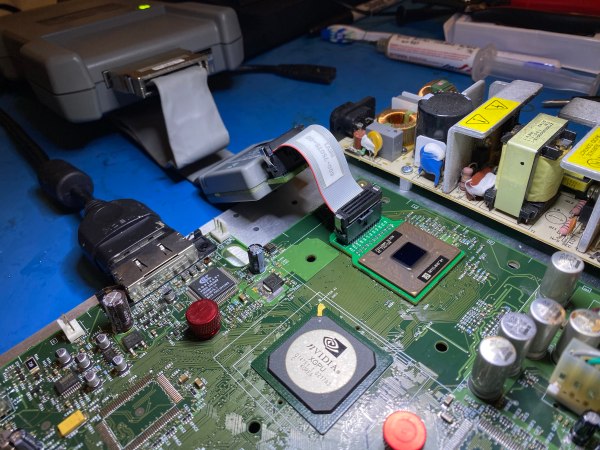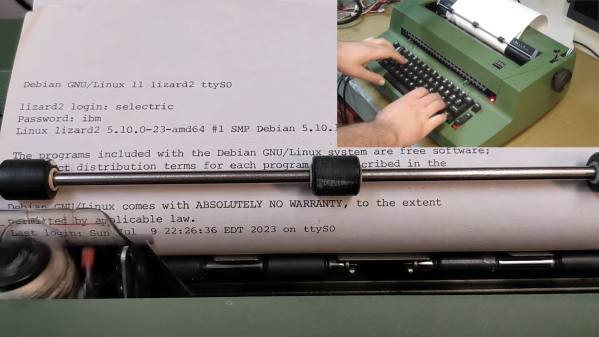When Microsoft released its first entry into the video game console market with the Xbox, a lot of the discussions at the time revolved around the fact that it used a nearly off-the-shelf Intel CPU and NVIDIA GPU solution. This made it quite different from the very custom consoles from Nintendo and Sony, and invited thoughts on running custom code on the x86 console. Although the security in the console was hacked before long, there were still some open questions, such as whether the secret boot ROM could have been dumped via the CPU’s JTAG interface. This is the question which [Markus Gaasedelen] sought to answer.
The reason why this secret code was originally dumped by intercepting it as it made its merry way from the South to the North Bridge (containing the GPU) of the Xbox was because Microsoft had foolishly left this path unencrypted, and because the JTAG interface on the CPU was left disabled via the TRST# pin which was tied to ground. This meant that without removing the CPU and adding some kind of interposer, the JTAG interface would not be active.
A small issue after the harrowing task of desoldering the CPU and reinstalling it with the custom interposer in place was to keep the system integrity check (enforced by an onboard PIC16 MCU) intact. With the CPU hooked up to the JTAG debugger this check failed, requiring an external injection of the signal on the I2C bus to keep the PIC16 from resetting the system. Yet even after all of this, and getting the secret bootrom code dumped via JTAG, there was one final system reset that was tied to the detection of an abnormal CPU start-up.
The original Xbox ended up being hacked pretty thoroughly, famously giving rise to projects like Xbox Media Center (XBMC), which today is known as Kodi. Microsoft learned their lesson though, as each of their new consoles has been more secure than the last. Barring some colossal screw-up in Redmond, the glory days of Xbox hacking are sadly well behind us.













